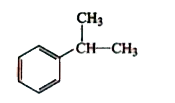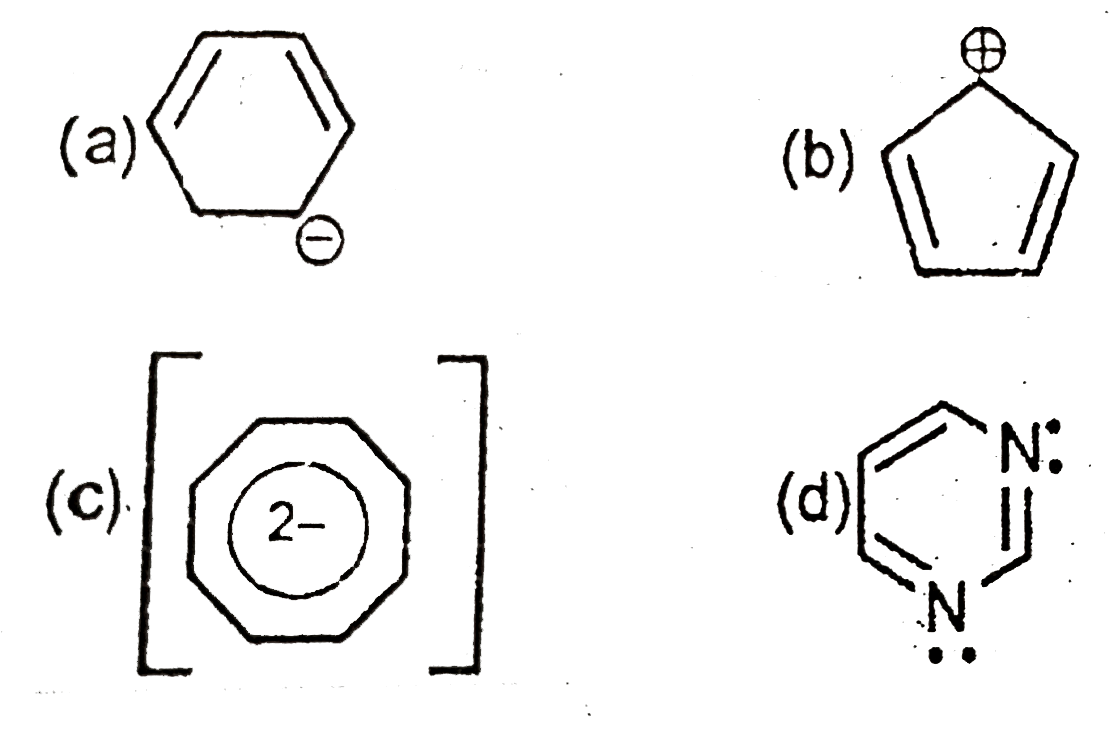Which of the following is aromatic ?




To determine which of the given compounds is aromatic, we need to follow a systematic approach based on the criteria for aromaticity. Here’s a step-by-step solution:
Step 1: Understand the Criteria for Aromaticity
A compound is considered aromatic if it meets the following criteria:
1. Cyclic Structure: The compound must be in a ring form.
2. Planarity: The compound must be flat or planar.
3. Conjugation: There must be a continuous overlap of p-orbitals, allowing for delocalization of π electrons.
4. Hückel's Rule: The compound must follow the 4n + 2 π electron rule, where n is a non-negative integer (0, 1, 2, 3,...). This means the compound should have 2, 6, 10, 14, etc., π electrons.
Step 2: Analyze Each Option
Now, let's analyze each option provided to see if they meet the aromaticity criteria.
Option 1:
- Cyclic: Yes
- Planar: Yes
- Conjugated: Yes
- π Electrons: 4 (2 from each double bond)
- Conclusion: Does not satisfy Hückel's Rule (4n + 2). Not aromatic.
Option 2:
- Cyclic: Yes
- Planar: Yes
- Conjugated: Yes
- π Electrons: 8
- Conclusion: Does not satisfy Hückel's Rule (4n + 2). Not aromatic.
Option 3:
- Cyclic: Yes
- Planar: Yes
- Conjugated: Yes
- π Electrons: 4
- Conclusion: Does not satisfy Hückel's Rule (4n + 2). Not aromatic.
Option 4:
- Cyclic: Yes
- Planar: Yes
- Conjugated: Yes
- π Electrons: 10 (2 + 2 + 2 + 2 + 2)
- Conclusion: Satisfies Hückel's Rule (4n + 2, where n = 2). Aromatic.
Step 3: Final Conclusion
Based on the analysis, the only compound that is aromatic is Option 4.
---
A compound is considered aromatic if it meets the following criteria:
1. Cyclic Structure: The compound must be in a ring form.
2. Planarity: The compound must be flat or planar.
3. Conjugation: There must be a continuous overlap of p-orbitals, allowing for delocalization of π electrons.
4. Hückel's Rule: The compound must follow the 4n + 2 π electron rule, where n is a non-negative integer (0, 1, 2, 3,...). This means the compound should have 2, 6, 10, 14, etc., π electrons.
Now, let's analyze each option provided to see if they meet the aromaticity criteria.
- Cyclic: Yes
- Planar: Yes
- Conjugated: Yes
- π Electrons: 4 (2 from each double bond)
- Conclusion: Does not satisfy Hückel's Rule (4n + 2). Not aromatic.
- Cyclic: Yes
- Planar: Yes
- Conjugated: Yes
- π Electrons: 8
- Conclusion: Does not satisfy Hückel's Rule (4n + 2). Not aromatic.
- Cyclic: Yes
- Planar: Yes
- Conjugated: Yes
- π Electrons: 4
- Conclusion: Does not satisfy Hückel's Rule (4n + 2). Not aromatic.
- Cyclic: Yes
- Planar: Yes
- Conjugated: Yes
- π Electrons: 10 (2 + 2 + 2 + 2 + 2)
- Conclusion: Satisfies Hückel's Rule (4n + 2, where n = 2). Aromatic.
Based on the analysis, the only compound that is aromatic is Option 4.
Topper's Solved these Questions
- HYDROCARBONSBook:VMC MODULES ENGLISHChapter:HYDROCARBONSExercise:Level-2 (Numerical Value Type)
Explore 15 Videos
- HYDROCARBONSBook:VMC MODULES ENGLISHChapter:HYDROCARBONSExercise:JEE Main Archive
Explore 46 Videos
- HYDROCARBONSBook:VMC MODULES ENGLISHChapter:HYDROCARBONSExercise:Level-1
Explore 75 Videos
- HALOALKANES AND HALOARENESBook:VMC MODULES ENGLISHChapter:HALOALKANES AND HALOARENESExercise:IN-CHAPTER EXERCISE - F
Explore 6 Videos
- ICONIC EQUILIBRIUMBook:VMC MODULES ENGLISHChapter:ICONIC EQUILIBRIUMExercise:IMPECCABLE
Explore 50 Videos
Similar Questions
Knowledge Check
Which of the following aromatic compounds will react with KMnO4 ?
A B
B C
C D
D
Which one of the following aromatic compounds fails to undergo Friedel-Crafts reactions ?
AC6H5−CH3BC6D6CC6H5−NO2DC6H5Cl
Which of the following is not aromatic?
View SolutionWhich of the following in not aromatic in nature?
View SolutionWhich of the following is anti-aromatic in nature?
View SolutionWhich of the following aromatic acids is most acidic?
View SolutionWhich one of the following ion is aromatic ?
View SolutionWhich of the following is non − aromatic in nature ?
View Solution
